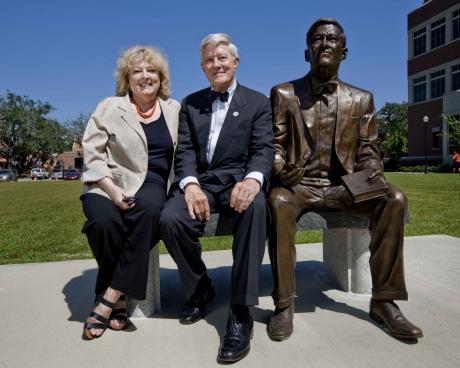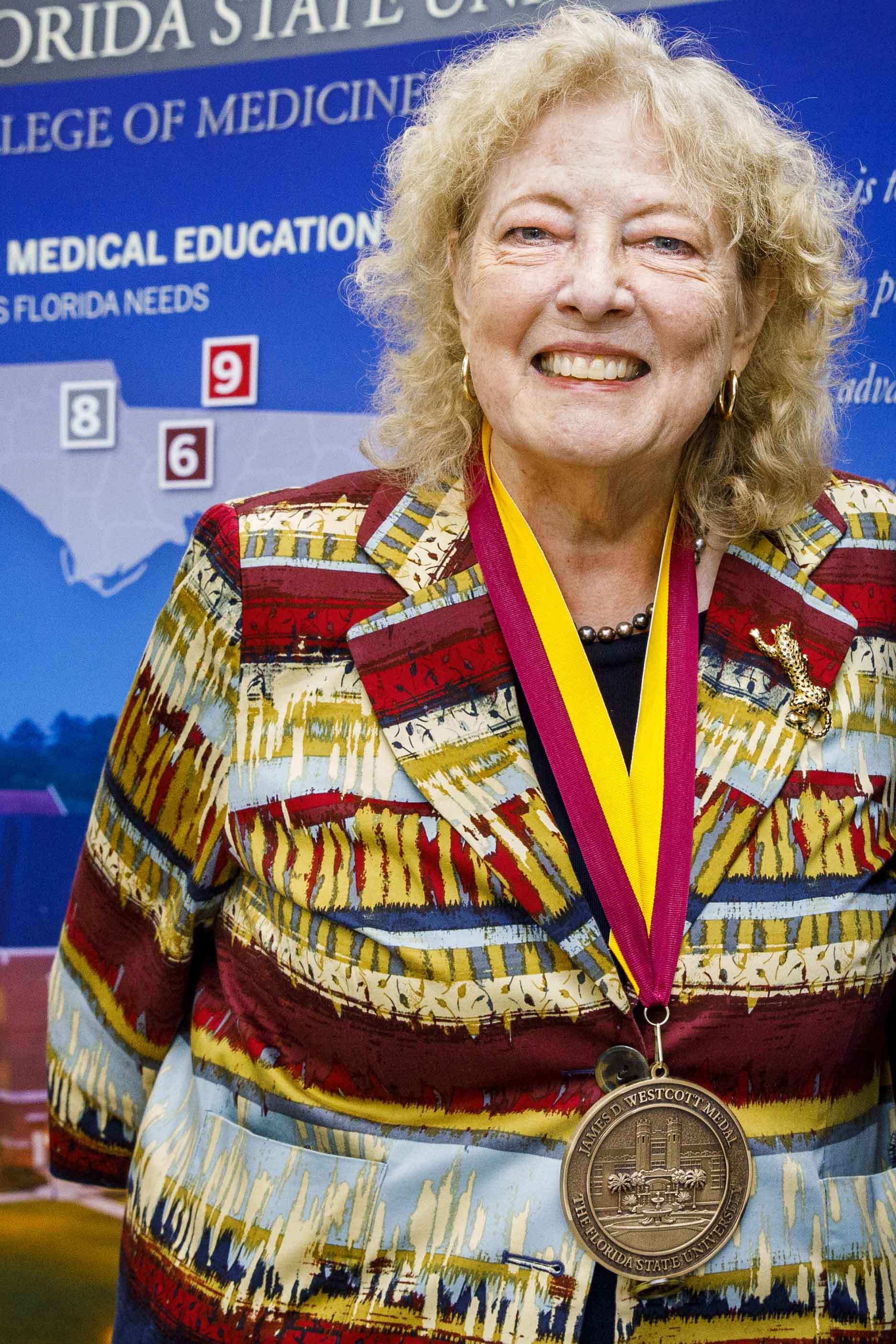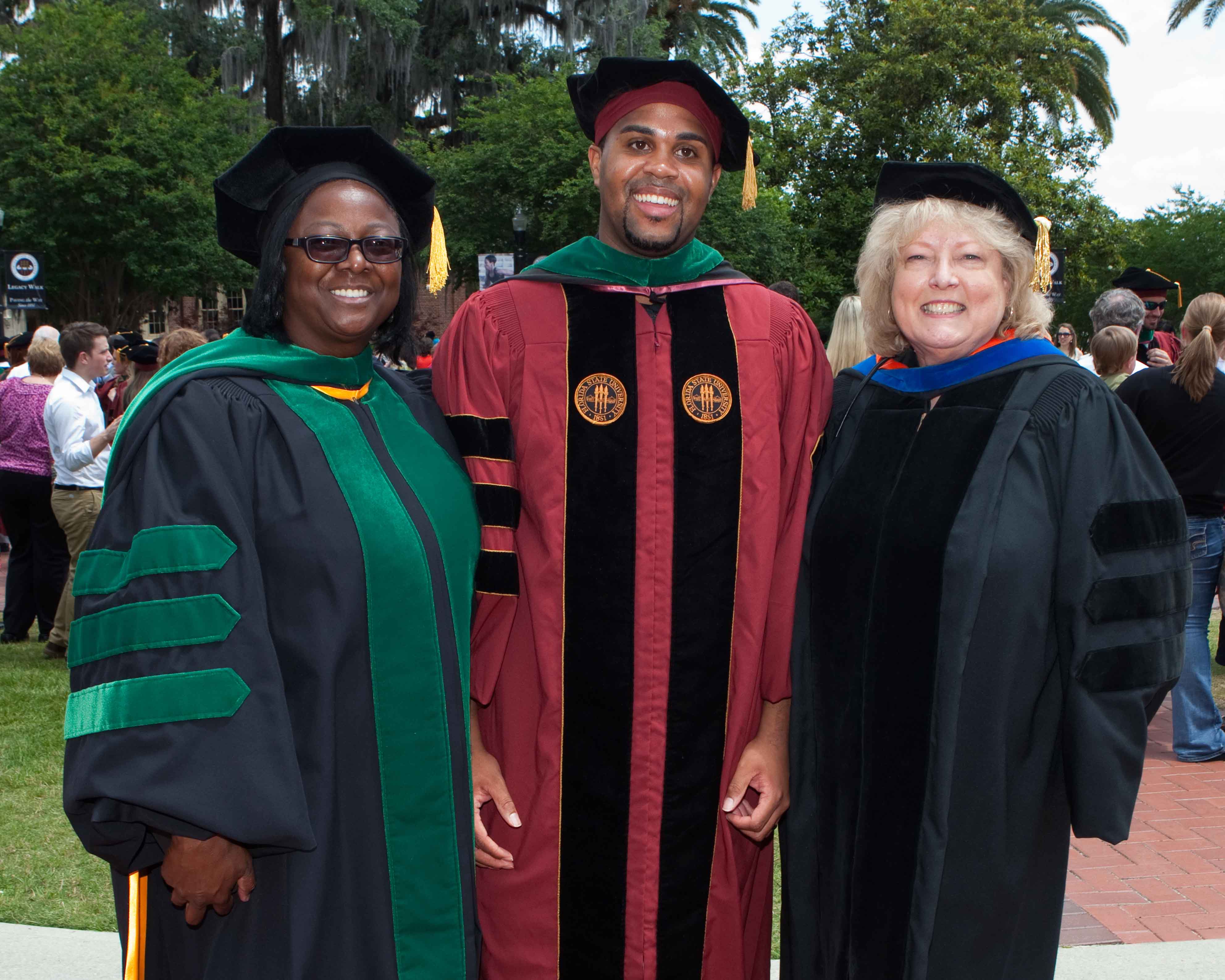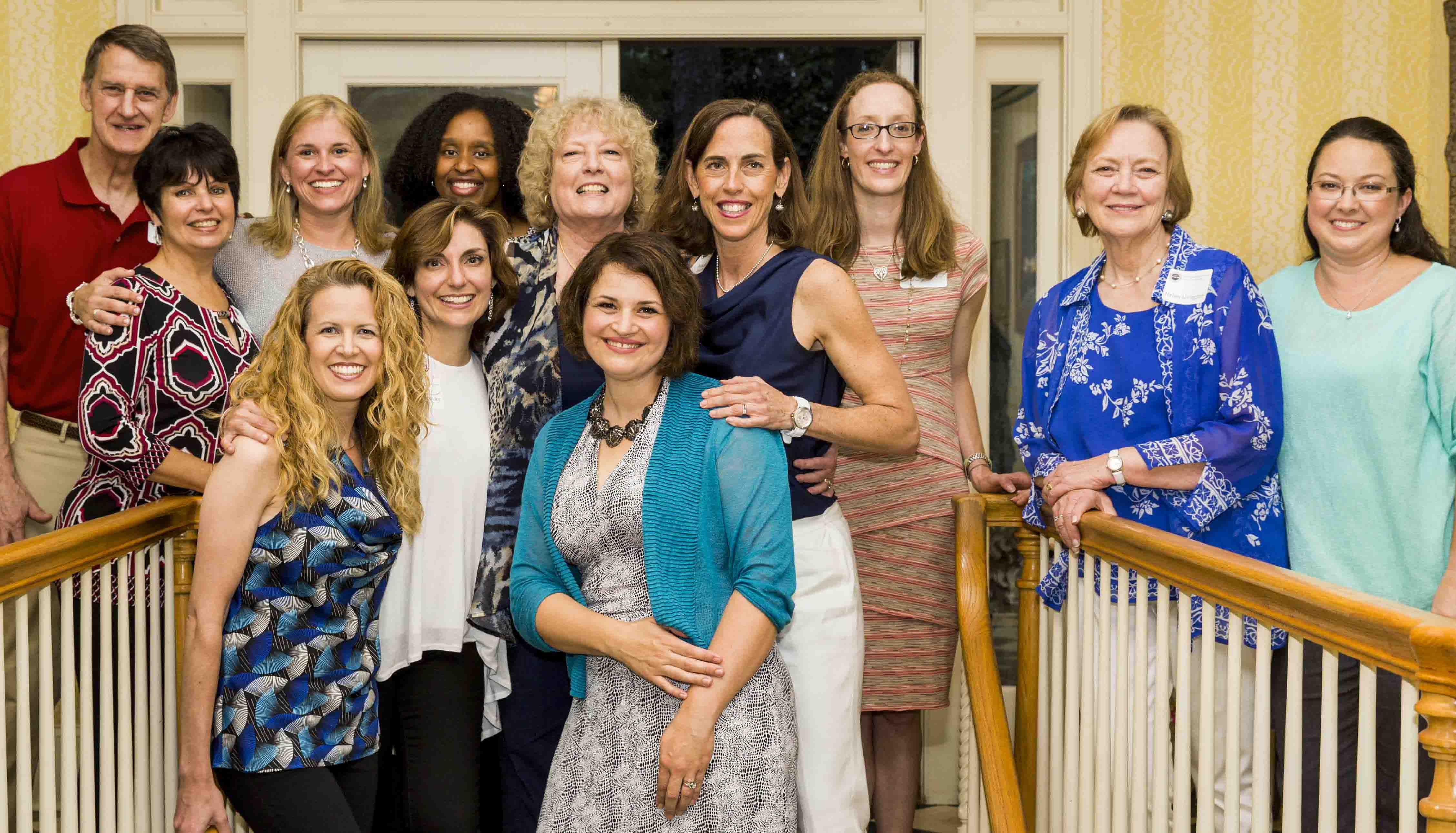With a fearless approach, Myra Hurt led the fight for a medical school at Florida State


Her high school biology students in the mountainous region of North Arkansas once told a visitor of Myra Hurt, “She looks normal – but she’s not.”
In fact, she spent a full life refusing to act as others expected. The results were spectacular.
Myra Hurt, architect of the Florida State University College of Medicine, non-conformist, and a self-described poor girl from a rural Scots-Irish farming family, died Saturday night in Tallahassee. She was 75.
Why would her students describe her that way? “Because I was known for doing the unexpected,” Hurt said (with a certain amount of glee).
Nor was she unassuming.
Each fall a sign appeared outside her office door at the medical school – a playful witch on a broom and a message: “‘Fraidy cats welcome.”
For some, it held the potential for enter at your own risk. Hurt was a force of nature who, while a fiercely loyal friend with people she respected, didn’t hesitate to hold others to the same set of expectations she learned as a child growing up in Arkansas.
“My family were people very strong in their values,” Hurt said in her book about the creation of the Florida State University College of Medicine. “They worked hard on the land. They did not tolerate foolishness spoken by children. You learned to keep your mouth shut unless you had something to say, and that was a good thing to teach a child.”
Sometimes described as a Celtic warrior, Hurt had plenty to say. When she spoke, you listened. By the time she was done, and against many obstacles, Florida State had the first new medical school to open in the United States in two decades – one of many significant accomplishments in which she was the driving force.
In 2015, at a time when most thought she was edging toward retirement, Hurt’s latest epiphany resulted in a new undergraduate degree program at FSU: Interdisciplinary Medical Sciences. Today it’s one of the most popular majors on campus and another tool of her design aiding the effort to meet the nation’s many health-care challenges.
“As a Southern woman she knew how to tell the truth without ruffling too many feathers,” said retired associate dean Helen Livingston. “There were times when she had to play nice, even when she might be spitting mad. She made the most of being the best-informed person in the room.”
When she was a little girl, Hurt’s father was shot in a hunting accident and couldn’t work for two years, leaving the McEarls to depend on the support of family and friends.
“The kids at school made fun of me because of the things I had to do without,” Hurt said. “That’s where I got this smart mouth of mine.”
Hurt’s mother, Myra McEarl, insisted her daughter would go to college. Her father, Paul, said he couldn’t afford it.
“And I said to myself, ‘He doesn’t have to send me to college. I’m going to work my way through,’” Hurt said.
So she did.
She earned a degree in biology at Henderson State University and accepted a high school teaching job in that subject, inviting students, most of them from poor families, to consider the wonders of science by taking new approaches. Her unorthodoxy and curiosity came naturally, inspired by spending most of her time during childhood exploring the outdoors and nature with her cousins. She also had an affinity for teaching, including piano lessons she gave for 25 cents a lesson – when she was 10, and teaching Sunday school and vacation Bible school.
“In the 1950s, a woman had two career choices,” Hurt said. “You could be a nurse or you could teach.”
She taught in high school for 10 years. During that time, she was invited by Henderson State to return each year and instruct interns on the experimental approach to teaching biology. One of her college professors one day caught Hurt off guard by telling her she should pursue a Ph.D.

awarded the Westcott Medal,
the university's highest honor.
“I had never contemplated such a thing,” Hurt recalled. “I thought, ‘My God, how can I do that? I have a young child.’ Then I began to think, ‘You must find a way, Myra. This is your destiny.’”
She would eventually get a master’s degree in biology from Memphis State, where she and her first child lived on a $6,000 a year grad student stipend and, with urging from another professor, went on to earn a Ph.D. in microbiology from the University of Tennessee Center for Health Sciences-Memphis.
In Memphis, she met a medical student named Julian Hurt (“The love of my life”) and aligned her educational path with his post-graduate training. She did post-doctoral work at Baylor College of Medicine while he completed a five-year general and vascular surgery residency.
She became an assistant research professor at the University of Kansas while he continued his surgical training.
When he accepted a position to practice in Tallahassee in 1985 at the invitation of his senior surgeon from residency training, she (and their now three children) found a position as a visiting professor in the FSU Department of Chemistry.
Bob Reeves, who served on her doctoral committee at Memphis State, was already at FSU as director of the Program in Medical Sciences (PIMS). That coincidence would prove to be fortuitous.
For many years, there were only three medical schools in Florida – at the University of Florida, the University of Miami and later the University of South Florida, which enrolled its first class in 1971.
Meanwhile, the state was rapidly growing, and many rural areas and inner-city communities were struggling to find doctors.
The Legislature, in addition to approving USF’s new medical school, funded the new PIMS program to begin accepting students in 1971. Eventually increasing to about 30 students a year, the program taught basic medical sciences at FSU before students transferred to the UF College of Medicine for their final three years. The intended purpose of PIMS was to recruit more students from rural and other medically underserved communities with the hope they would one day return home to serve those communities.
Hurt’s winding path eventually led her to become director of PIMS in 1992. A year later, she wrote a white paper describing a new, four-year medical school at Florida State. It was the beginning of the fight of her professional life.
A year after that, she conceived a novel program (SSTRIDE) introducing middle school and high school students to the possibility of a career in health care. Most were from families where even the idea of going to medical school one day never seemed within reach.
UF controlled the PIMS program, including its admissions process, but it was funded by FSU via the Legislature. Hurt found that very little of the funding was actually finding its way into PIMS, and the program went through a dark period where too many students struggled to pass the required United States Medical Licensing Exam when they took the first part during their second year of medical school (at UF). That was before Hurt started ruffling feathers.
She began to fight for a fair share of the funding and started to regularly make early-morning drives to Gainesville to be part of curriculum meetings and to plan for improving PIMS’ teaching faculty. Better results quickly followed, and Hurt was now fully engaged with her vision that FSU needed a four-year medical school.
Unbeknownst to her, state-Rep. (and later state senator) Durell Peaden, a family physician who had practiced in then-rural Crestview outside Pensacola, was concerned about the lack of medical care available to many of his constituents in the Panhandle.
Then-FSU President Sandy D’Alemberte championed the idea of a new medical school because he thought it would help attract more and better-qualified science students to the university’s undergraduate programs and would lead to more research grant funding.
The Association of American Medical Colleges (AAMC) and the American Medical Association weren’t interested. Their Liaison Committee on Medical Education (LCME), the accrediting body, openly stated on its website that the nation did not need any new medical schools – or more doctors.
D’Alemberte introduced Hurt to Peaden and it was game on.
The Florida Board of Regents, which at the time governed Florida’s public universities, ignored a report illustrating a critical need for more primary care physicians and more doctors who would practice in rural and underserved communities of Florida. There was an element of the board that also appeared to be acting to protect the hold UF and the other two medical schools had on funding for medical education.
They likely underestimated what they were up against in Hurt.
She showed up at a Board of Regents meeting in 1999 after making sure each member had a copy of the report. She took note that the reports seemed to be unopened and unread.
“A certain board member – an alumnus of the University of Florida, whom we’ll call Regent X – cornered me, kind of as a cat would corner a mouse,” Hurt recalled. “He asked, ‘Myra, why in the world does Florida State need a medical school?’ And I said, ‘You’re asking the wrong question, but you’re asking the right person. The real question is: Why does Florida need another medical school? And you’re asking the right person because I know all of the answers – and they’re all in the studies that were provided to you for this meeting!’”
Hurt explained to him the “health care crisis” in rural counties, big cities with urban poor and in parts of Florida where retirees from big cities up north were settling.
“Where are the doctors going to come from?” She asked. “Not all of them can come from Gainesville or Miami or Tampa. So where can they come from? That’s what I have to ask you. The need is going to be so great that it cannot be met by just one new medical school. We’re going to have to have several new medical schools.”
She noted that national data at that time was saying, incorrectly, that there were too many doctors in the U.S. But national data also was saying, correctly, that there was a great growth of older citizens, and a great migration of citizens from the North to the South. There were not enough doctors to take care of the population redistribution.
“Thankfully, our Legislature took steps in the 1990s and early 2000s to help us prevent a real health care crisis,” Hurt said. “Otherwise, things right now would be really horrible.”
The most emotionally draining fight over a new medical school came with the LCME, which wasn’t in the mood for a new medical school, especially one with FSU’s unique community-based approach where students would spend two years at the central campus in Tallahassee and two years at one of the regional campuses spread out across Florida.
The model was devised by Hurt after she and then-FSU Provost Larry Abele toured other schools with similar goals and missions to the one being planned in Tallahassee.
There were moments when it looked like the program would fail, but not if Hurt was the one talking.
During a tense meeting with students in the first class, their dean at the time seemed to concede to bleak circumstances. Hurt then stepped to the fore.
“She rallied the students with this feisty vow: ‘We are going to kick the LCME’s ass!’” Livingston said. “And because we did, her new paradigm for medical education is producing the kinds of physicians that Floridians need.”
John Thrasher was Speaker of the Florida House in 2000 when Dr. Peaden’s bill for a new medical school at Florida State was introduced. As FSU’s president in 2020, he awarded Hurt the university’s highest honor – the Westcott Medal.
“Dr. Hurt has attained a stature that will leave an indelible mark on FSU and a legacy that will last long after she ceases being a full-time faculty member and administrator at the College of Medicine,” Thrasher said.

Hurt served as acting dean of the College of Medicine in 2000 when it was first signed into law by Gov. Jeb Bush. She then became the dean of student affairs and oversaw admissions.
She recognized that some of the students most likely to fulfill FSU’s mission might need additional preparation before beginning the rigors of medical school. She developed the Bridge Program, which admits 10-14 students annually and provides a year of preparation and mentoring before they enter medical school. That program has taken students who otherwise might not have been admitted and produced significant achievements, including numerous Bridge students who went on to become their medical school class president and more than 70% who have gone on to become primary-care physicians, many of them serving in communities desperately in need of more doctors.
In 2006, one year after FSU graduated its first class of 27 new physicians, the AAMC did an about-face, calling for a 30% increase in medical school enrollment. That opened the way for more than 40 new medical schools across the country, including six more in Florida.
Now with 1,847 M.D. alumni – more than 1,000 of them in practice after completing residency and fellowship training – the FSU College of Medicine ranks among the top eight schools in the country for the percentage of graduates practicing in medically underserved communities. FSU is also among the top programs in the country for percentage of graduates practicing primary care and percentage who practice in their home state. Those stats are from the AAMC, and directly correlated to Hurt’s 1993 white paper.
One of the universities outside Florida interested in developing an M.D. program after the AAMC’s change of heart hired Hurt as a consultant. Liking what they heard, they asked her to come and create a new medical school there. She declined.
“It’s too hard,” she said. “You’ve got to put your whole heart and soul into it. It takes everything you have. It was worth everything I had, but just once. Never again.”
Contact Doug Carlson at Doug.Carlson@med.fsu.edu

Photo at top right: Myra Hurt joins former FSU president Sandy D'Alemberte next to the statue commissioned in his honor. (Photo by Colin Hackley)
